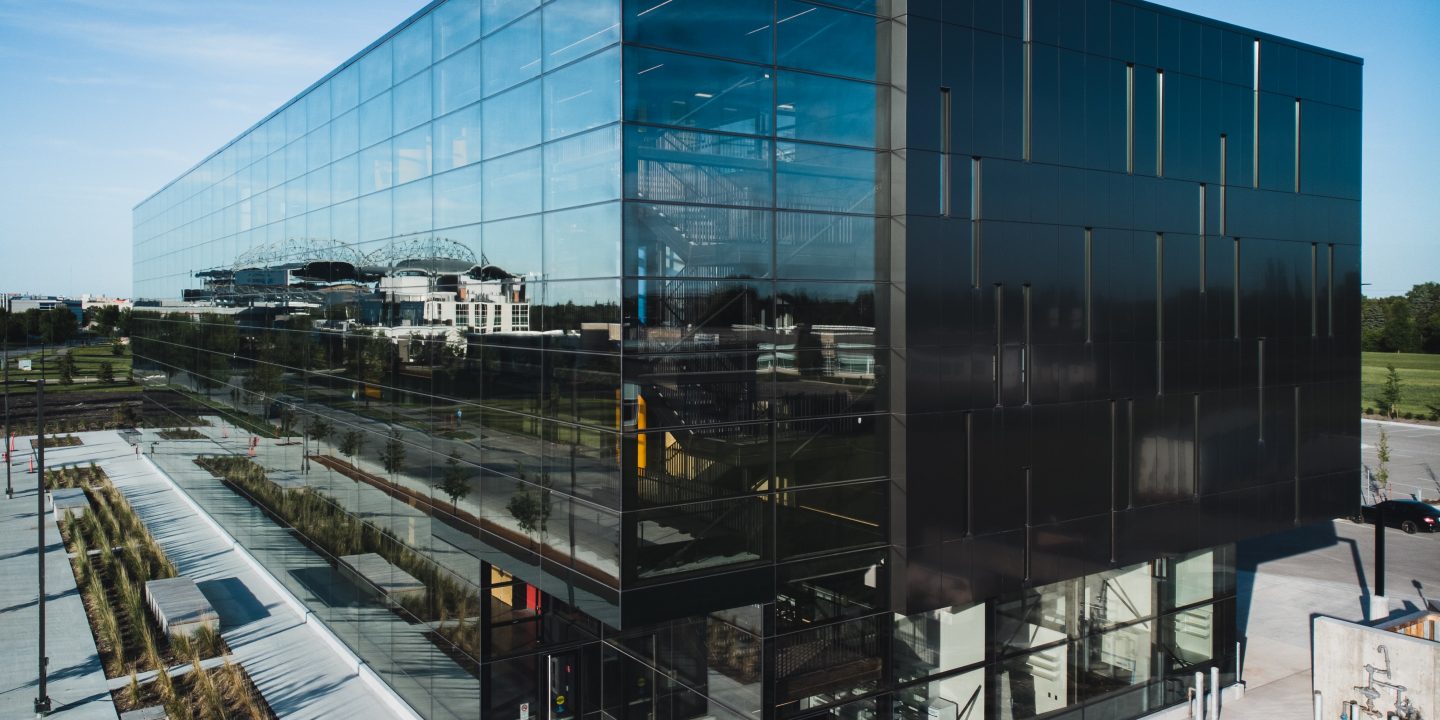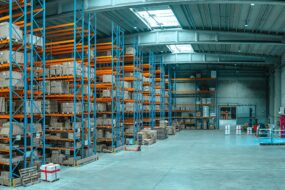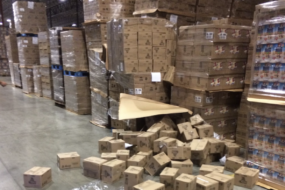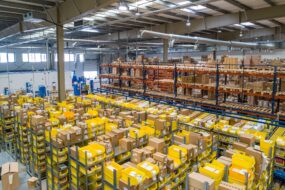Contents

Logistics centers determine how well your e-commerce business distributes its products. Without a wide and efficient distribution network, your products simply can’t reach your customers in an appropriate manner, and this can mean the end of your online business.
But with the guidance of a good logistics center, your company’s fulfillment process can run smoothly and quickly. This means satisfied customers, cost savings, and long-term success for your business.
What Are Logistics Centers?
Logistics centers are distribution hubs for finished products. While many retailers manage their distribution in-house, others utilize logistics centers to manage their fulfillment process.
Logistics centers are sometimes referred to as distribution centers, fulfillment centers, or warehouses. While logistics centers do store inventory that is waiting to be sent out, they manage many more operations, such as receiving, picking, packing, and shipping.
How Do They Operate?
Oftentimes, logistics centers are located strategically throughout the country in different regions. This allows e-commerce businesses to use multiple logistics centers to ship goods to customers in that region. Because the goods have less distance to travel to customers, businesses save on shipping costs and customers receive their goods faster.
Different logistics centers offer different services. Some only offer warehousing solutions, whereas others are comprehensive fulfillment operations. Some logistics centers serve as intermediaries between two facilities on the distribution chain.
Types of Logistics Centers
Before committing to a particular logistics center, make sure it is set up to meet your needs. Some don’t have the infrastructure to fulfill orders and are simply set up as storage solutions.
These are the different types of logistics centers:
Distribution Center
While the terms distribution center and fulfillment center are often used interchangeably, they are technically different. Depending on the circumstances, they may be used to refer to slightly different operations.
Distribution centers are often used as a middle point in retail distribution. They serve as distribution hubs to further move finished goods down the supply chain and closer to their end destination.
In some cases, distribution centers pack and send products to customers. In other cases, they transfer them to another mode of transportation and move them to another storage facility, like a warehouse or fulfillment center. Distribution centers are frequently viewed as more business-focused than fulfillment centers.
Fulfillment Center
Fulfillment centers are viewed as more customer-focused. They fill customer orders, preparing them for shipment to their final destination.
While e-commerce businesses can fill orders themselves, fulfillment centers offer a third-party service that handles the entire process. By outsourcing fulfillment, online businesses are often able to keep costs low, fill orders faster, and boost order accuracy.
Smaller businesses benefit from the established infrastructure and processes of the larger fulfillment centers, making the fulfillment process easier and more efficient. They save money on shared storage costs and lower shipping rates since goods have less distance to travel to their final destination.
On-Demand Warehousing Solutions
On-demand warehousing is a scalable model that allows retailers to use available warehouse space on an as-needed basis. E-commerce businesses are able to just use the space they need rather than paying for a lot of unused storage space, which is common in warehousing.
Since all online businesses are looking to keep costs as low as possible, on-demand warehousing allows a way to only incur costs when they are necessary. For a lot of e-commerce businesses, this gives them the flexibility they need to keep operations running even when sales are down. When things pick up, they can quickly scale up with on-demand warehousing.
Since it isn’t a consistent solution, there are likely to be more fulfillment errors. It can also result in limited customer support and poor oversight since on-demand warehouses are continually dealing with different retailers and processes.
Micro-Fulfillment Centers
Retail stores are sometimes converted into mini fulfillment centers. These are referred to as dark stores, and they aren’t open to shoppers.
Many of these micro-fulfillment centers offer customer pick-up options as well as delivery. Customers can place their order online and then pick it up in person at the store. As this e-commerce hybrid continues to gain popularity, these dark stores are gaining popularity.
Logistipedia Can Optimize Your Supply Chain Management
At Logistipedia, we specialize in supply chain optimization and logistics management. Whether you use logistics centers or fulfill all orders in-house, we can analyze your operations and pinpoint areas for improvement.
With smoother operations, your business can fulfill customer orders faster and with higher accuracy levels, cut operations costs, and boost your bottom line. Reach out today to get started on more streamlined logistics processes.
Logistics Center FAQs
What are logistics centers?
Logistics centers manage the transport of goods from the manufacturer or retailer to the end customer. They are essentially distribution hubs in the supply chain.
What are the types of logistics centers?
Logistics centers come in a variety of types, including fulfillment centers, distribution centers, on-demand warehouses, and micro-fulfillment centers.
How is a logistics center different than a warehouse?
A logistics center takes on more tasks associated with the fulfillment process, whereas a traditional warehouse simply stores inventory. While a warehouse will undertake activities related to warehousing, such as receiving and tracking inventory, it won’t typically take on fulfillment tasks, such as picking, packing, and shipping orders.
What should I look for in a logistics center?
Look for a logistics center that has a solid history of filling orders for your type of e-commerce business. Ensure they have a good reputation and the capacity to continue to meet your needs as your business grows. Confirm their shipping timelines and costs fit your requirements.
References
What Supply Chain Visibility Means For Logistics Businesses. (January 2022). Forbes.
The Urgent Versus the Important in the Supply Chain. (January 2022). Forbes.




